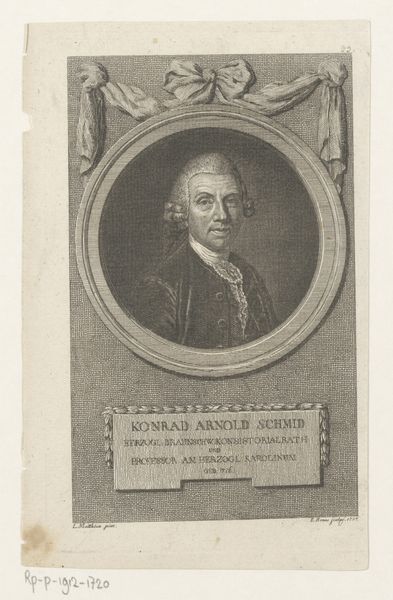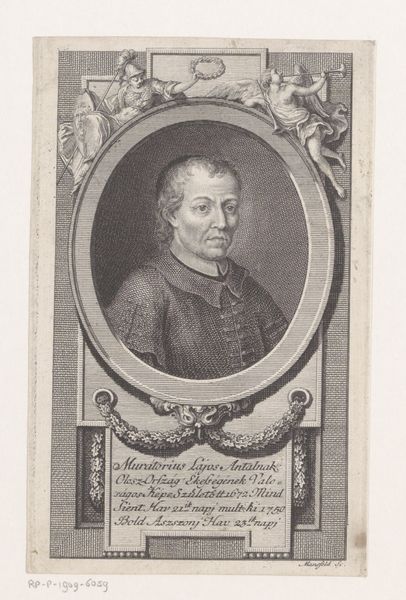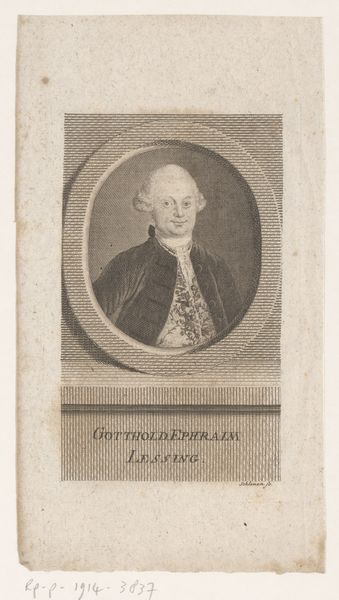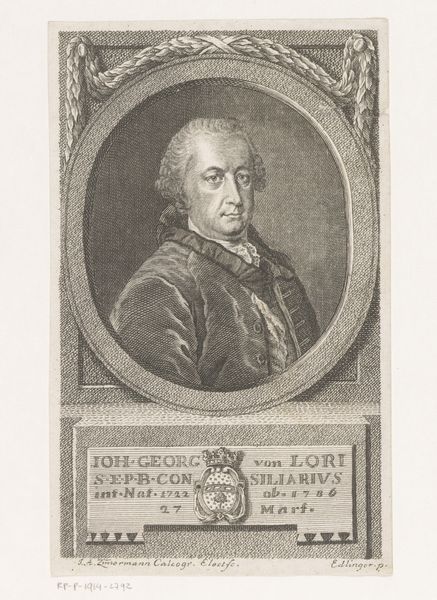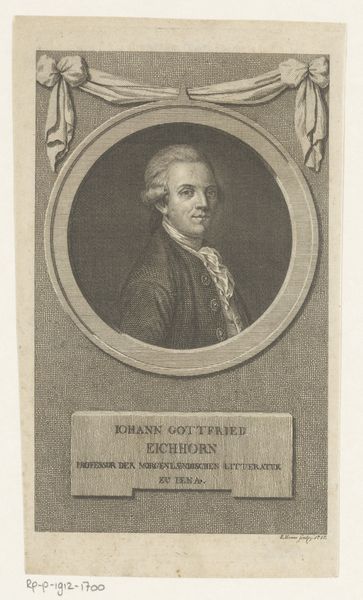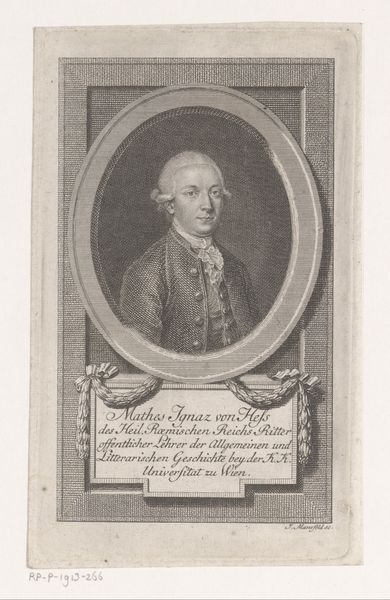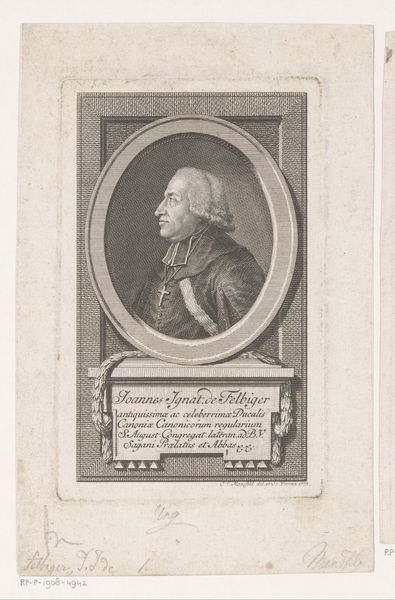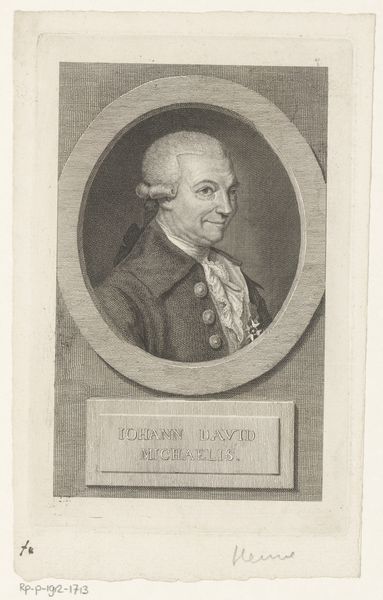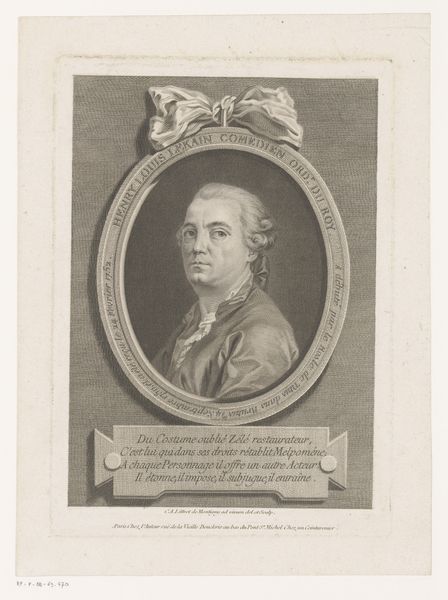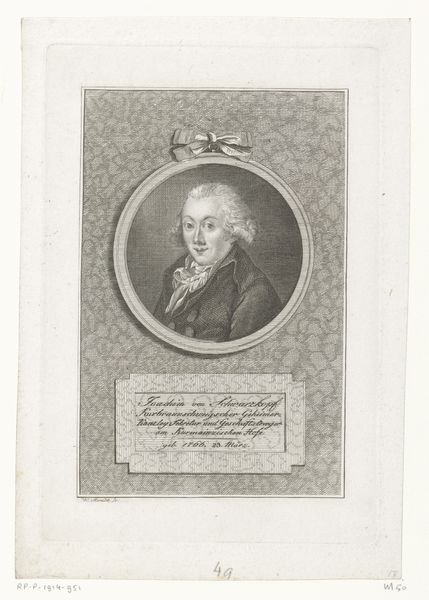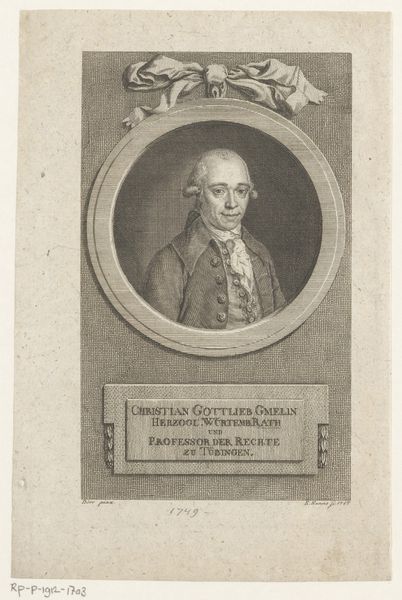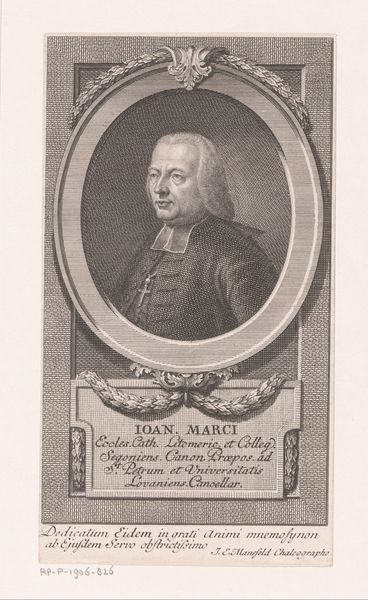
engraving
portrait
neoclacissism
old engraving style
historical photography
history-painting
academic-art
engraving
Dimensions: height 168 mm, width 108 mm
Copyright: Rijks Museum: Open Domain
Eberhard Siegfried Henne made this portrait of Johann Jakob Griesbach using etching, a printmaking technique. The image is built from finely incised lines on a metal plate, likely copper. Acid would have been used to bite into the metal, with areas protected by a resist to create the image. The varying densities of lines create tones and textures, defining Griesbach's features and clothing. Look closely and you’ll see the hatching and cross-hatching used to build up the darker areas. Etching allowed for relatively easy reproduction, making images accessible to a wider audience. This was particularly relevant in the 18th century, when printed portraits were a popular way to disseminate images of important figures like Griesbach, who was a prominent theologian. The controlled lines and tonal range speaks to the engraver's skill and precision. Through the etching process, Henne was able to capture not just Griesbach's likeness, but also his social standing and intellectual persona. It reminds us that printmaking is not just a reproductive technique, but a creative practice.
Comments
No comments
Be the first to comment and join the conversation on the ultimate creative platform.
